VIVO Pathophysiology
Dental Anatomy of Ruminants
|
Ruminants such as cattle, sheep and goats are herbivores with a unique digestive anatomy. A prominent feature of ruminant dental anatomy is that they lack upper incisors, having instead a "dental pad", as shown in the image to the right of a goat. The examples of ruminant dental anatomy depicted here are all from cattle. | 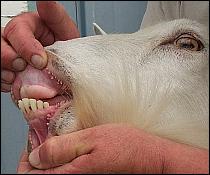 |
| Dental Formulae | |||||
|---|---|---|---|---|---|
| Deciduous | 0 0 3 3 1 3 |
= 10 | Permanent | 0 0 3 3 3 1 3 3 |
= 16 |
| Tooth Eruption | ||
|---|---|---|
| Deciduous | Permanent | |
| Incisors | Birth - 2 weeks | 18 - 48 months |
| Premolars | Birth - 1 weeks | 24 - 36 months |
| Molars | 6 - 30 months | |
|
In the dental formulae shown above, cattle are depicted as having 3 incisors and 1 canine tooth. Some authors prefer to state that they have 4 incisors, with the canine tooth refered to as the fourth or corner incisor. |
| Maxillary Arcade Note the lack of incisors. |
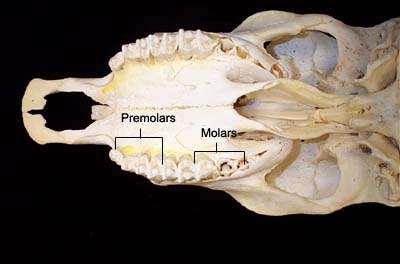 |
| Maxillary Arcade (Lateral view) |
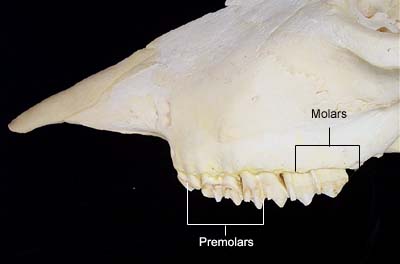 |
| Mandibular Arcade | 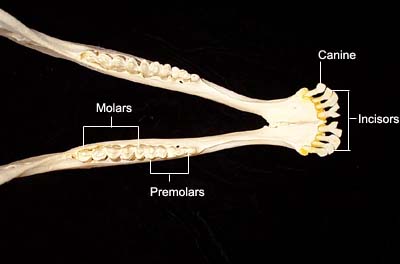 |
| Mandibular Arcade (Lateral view) The wide gap that seperates the incisors (or dental pad on the maxilla) from the premolars is called the diastema. |
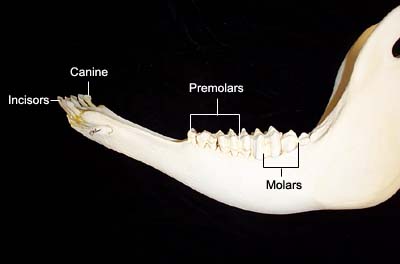 |
Author: Melissa Rouge
Send comments to Richard.Bowen@colostate.edu
